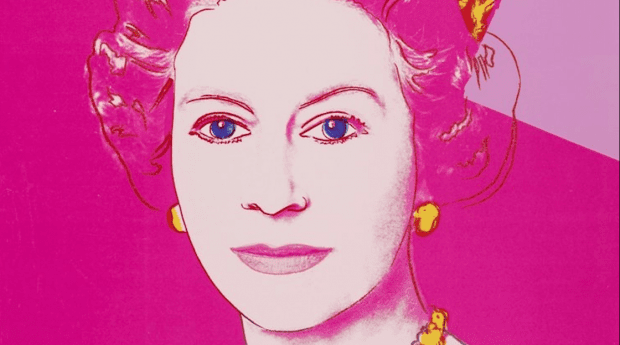Despite the countless books, interviews, exhibitions and films about his life, Andy Warhol remains oddly enigmatic. A shrewd architect of image, the American artist turned himself and those around him into celebrities while keeping his personal life carefully guarded. It’s commonly accepted that he was gay, a fact buttressed by his predilection for erotic male photography and films like Blow Job and My Hustler. But he also told biographer Jane Dillinger in 1980 that he was, in fact, still a virgin.
It’s hard to say whether Andy Warhol Revisited will shed any light on this particular question. Composed from the collection of art dealer Ron Rivlin, the expansive art show runs the gamut from his iconic soup cans and portraits of Marilyn Monroe to lesser known works like Ladies and Gentlemen, his series on trans women and drag queens.
“It’s interesting to observe the way sexuality plays out in his work over the course of his career,” Rivlin says. “The first works he ever submitted to a fine art gallery in the 1950s were male nudes, which were rejected for being too gay. He kept producing them throughout his career, but historically they’ve taken a backseat to his better-known pop-art pieces.”
His path to Warhol is an odd one. A Toronto native, Rivlin was a major player in the late ’90s rave scene as the promoter behind the Daybreaks parties, which brought heavy-hitters like Roger Sanchez, Paul Oakenfold and Underworld to the city. In 1999, he relocated to LA to run Coast to Coast Entertainment, a talent agency that primarily repped DJs and electronic dance music artists. By 2009 he was sitting on a substantial quantity of cash and was looking for solid ways to invest during the economic downturn.
“I was visiting a friend in Toronto and he had a one of Warhol’s Mick Jagger prints at his place,” Rivlin says. “He told me he’d paid $10,000 for it a decade earlier. When I started to look around I couldn’t find one for less than [$50,000], which made his work look like a very stable investment. My knowledge was still pretty minimal but I started buying his prints and quickly fell in love with his work. I had twenty of them within a month.”
The collection gradually swelled, and by 2011, it no longer fit in his home. He initially approached the landlord of his office building about using some vacant retail space as storage but ultimately decided to turn it into a gallery. Since then he’s purchased more than 250 pieces. His first stab at touring the collection happened earlier this year when he went brought part of it to Vancouver for a two-month stint before setting up shop in his hometown.
Though there’s no shortage of opportunities to see Warhol (his foundation notes more than 15 shows around the world this year alone), what differentiates Revisited from others is its sheer scale. With over 140 pieces, the exhibition is actually too large for the gallery the team secured, so the works will be rotated over its six-month run.
While he went into the art business for financial reasons, Rivlin’s interest in Warhol has moved beyond money. Seeing the show as an opportunity for education rather than profit (none of the featured works are actually for sale) his hope is to immerse Torontonians in the elusive mind of one of the 20th century’s most important artists.
“What keeps me intrigued with Warhol is the mystery behind him,” Rivlin says. “On one hand he had this intensely public persona. At the same time he was also incredibly private. And the things he kept private from the world, probably tell us a lot more about him than the things he shared. That mystery is what keeps me researching and wanting to understand him better.”
Andy Warhol Revisited
Runs Wednesday, July 1–Thursday, Dec 31, 2015
77 Bloor St West, Toronto
Tuesday to Sunday 10am–8pm
www.warholrevisited.com


 Why you can trust Xtra
Why you can trust Xtra


